Nanggu(SE-SZ-8)
Geographical Information |
|
|---|---|
| Geographical Coordinate System | Longitude :166° 1' 46.310" E |
| Latitude :10° 47' 22.610" S | |
| Height Above Sea Level:5 - 6 meters (Green et al. 2008:50) | |
| Map Datum:WGS84 | |
| Country | Solomon Islands |
| Region | Western Lapita Province, Temotu, Santa Cruz Islands, Nendö |
| Brief Description | SE-SZ-8 is located on the volcanic high island of Nendö in the Santa Cruz Islands, Temotu Province, Solomon Islands (Green 1976a: 249). The site is located 468 meters inland from the current coastline and lies at the southwestern end of the Tepiai Lagoon (Green et al. 2008: 51). The site is approximately 250 meters long and 100 meters wide (Green et al. 2008:50; Green 2009: 8). Vegetation cover on the site is varied, consisting of disused and current garden lands, bush and swamp land with mangroves. Vegetation on the excavated area primarily consisted of disused garden land in the south and center of the site and current garden land in the northern portion of the site (Green et al. 2008: 54). Nanggu was excavated by R.C Green in 19711 (Green 1972: 197,199; Green 2009: 8; Green et al. 2008: 58). |
| Photograph(s) | 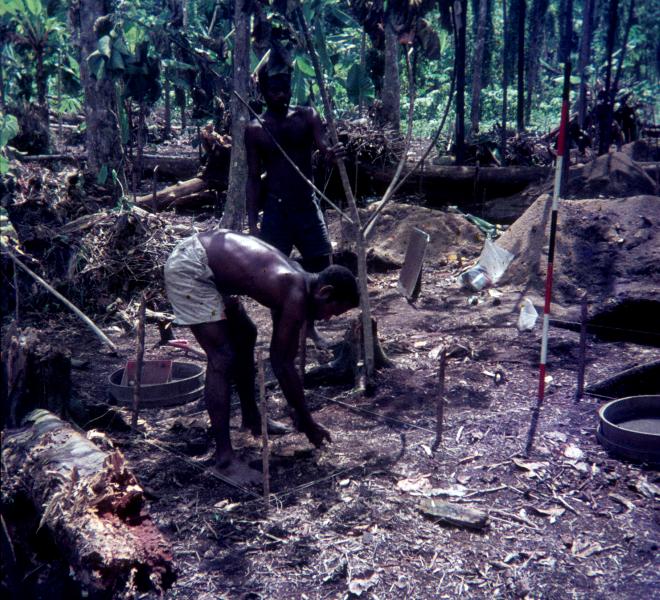 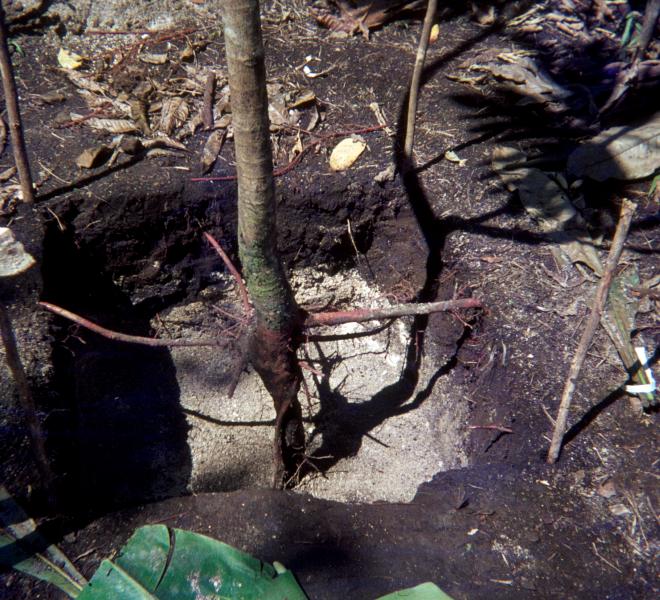  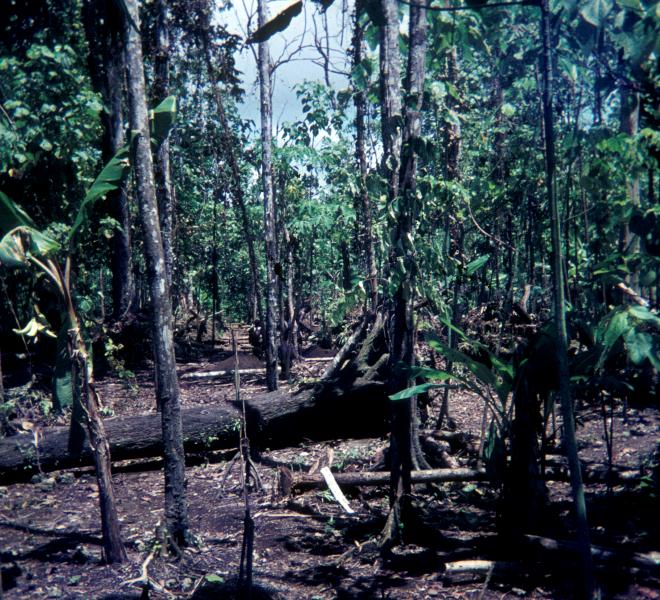 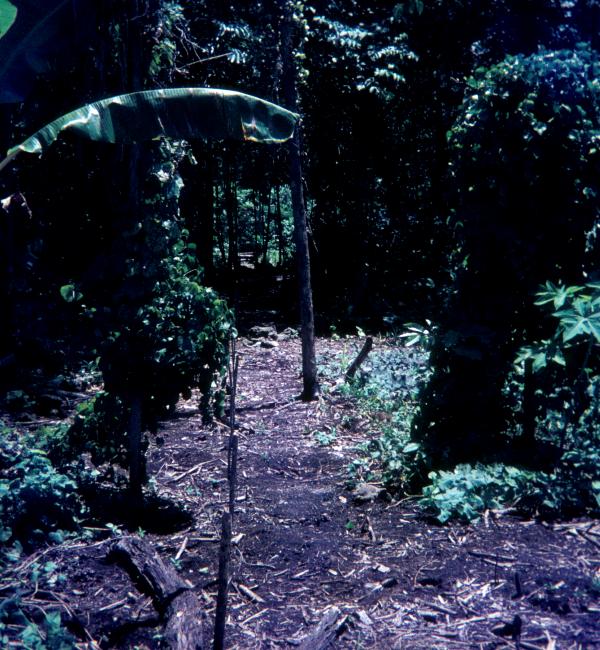  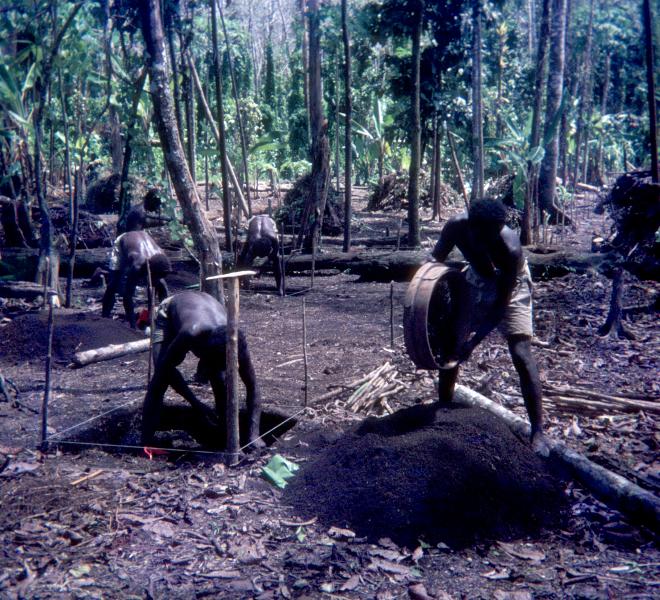 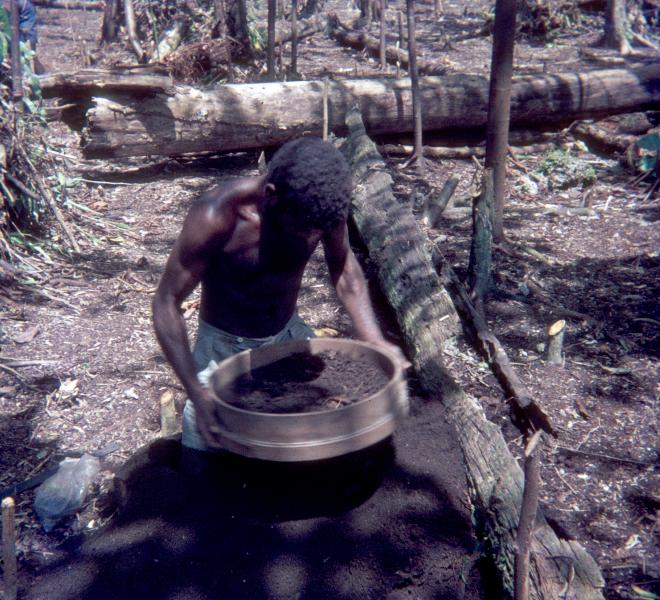 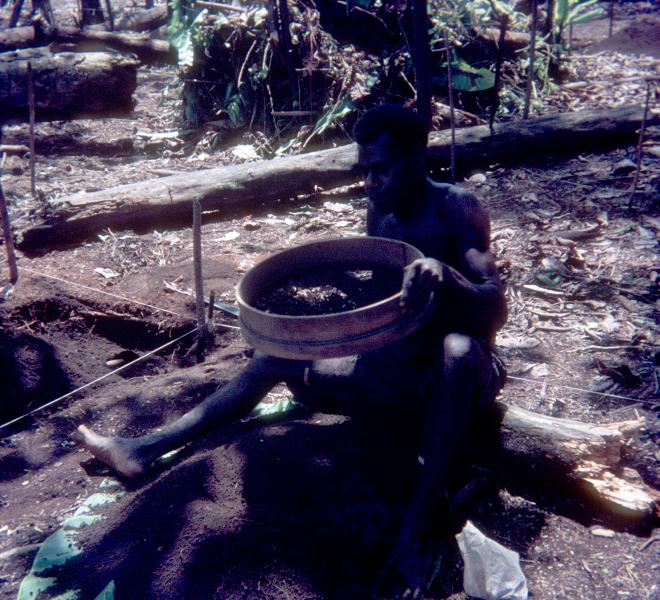 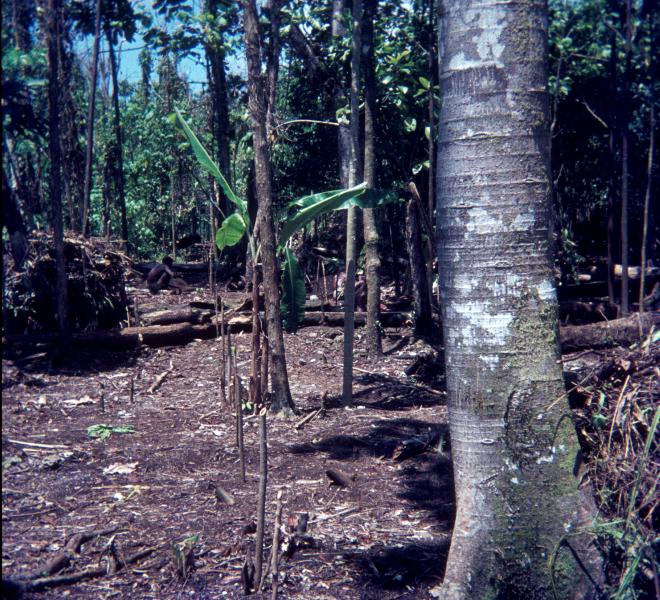 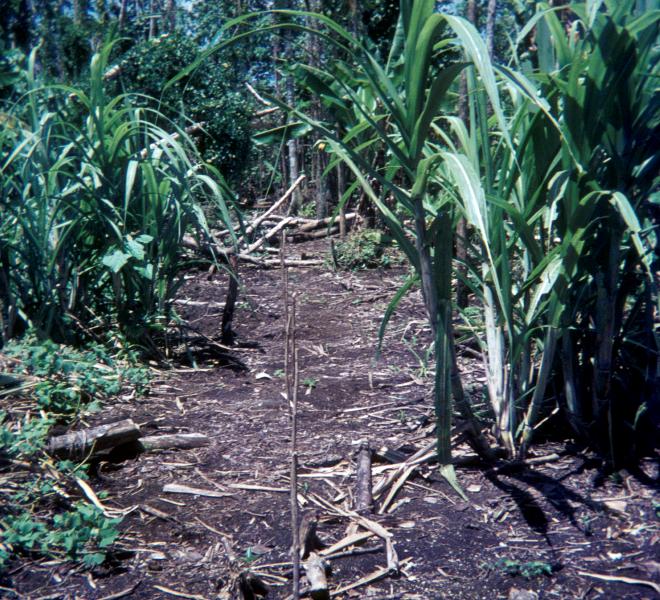 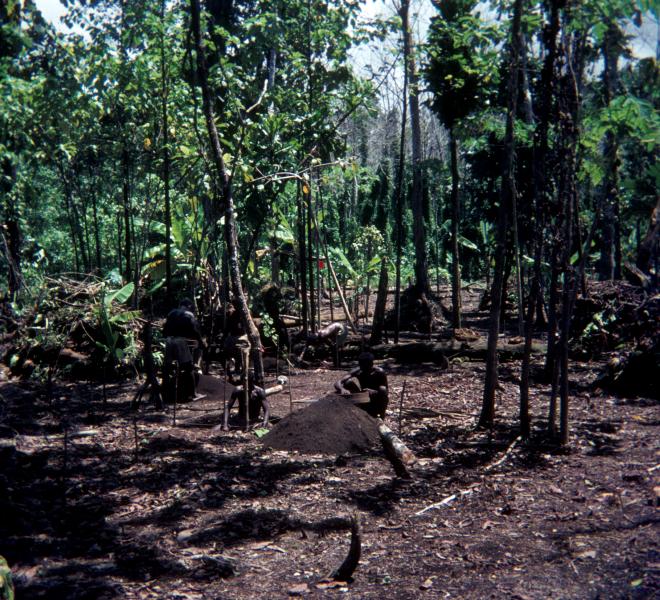 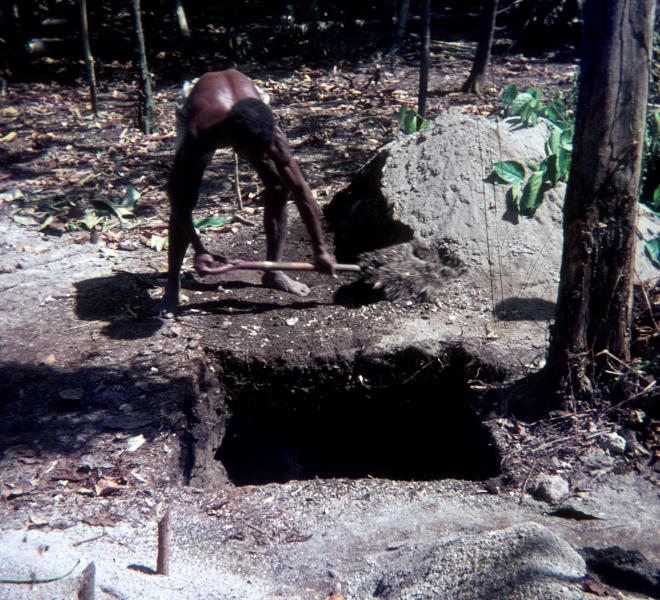  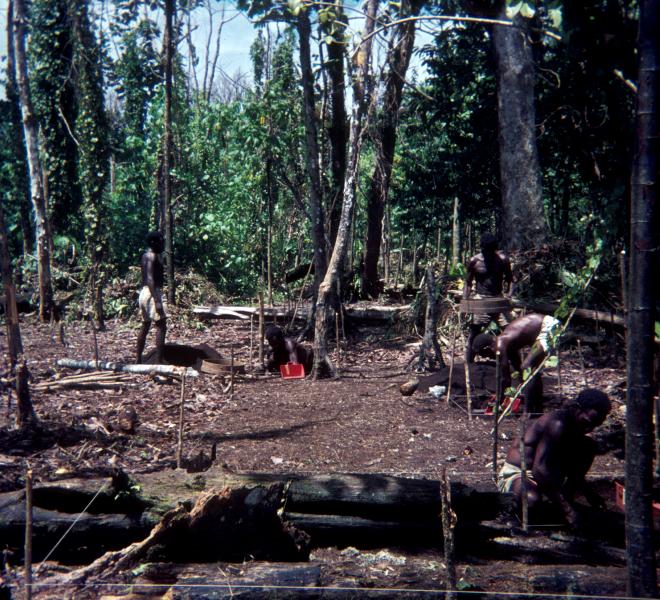 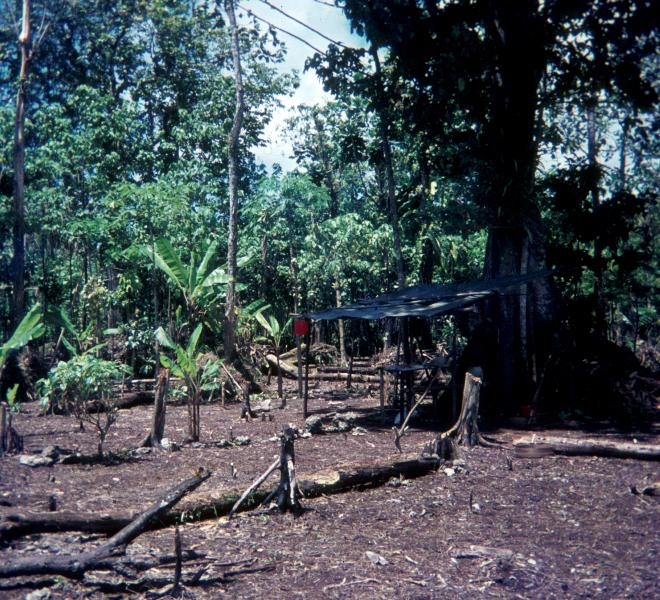 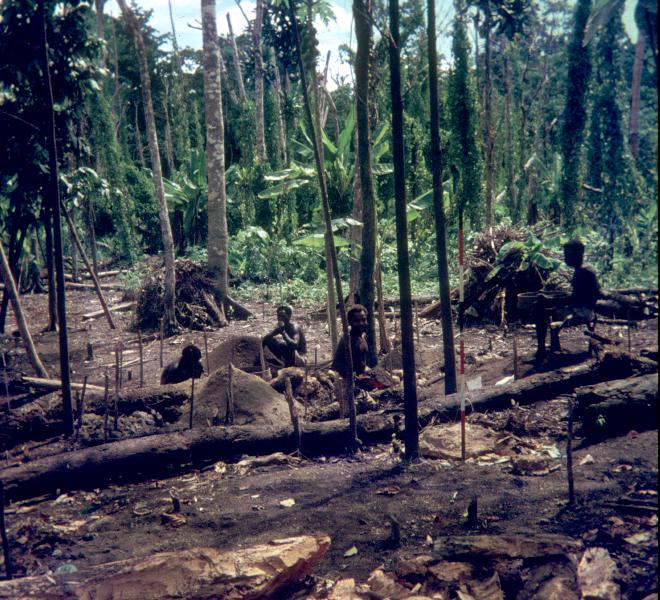 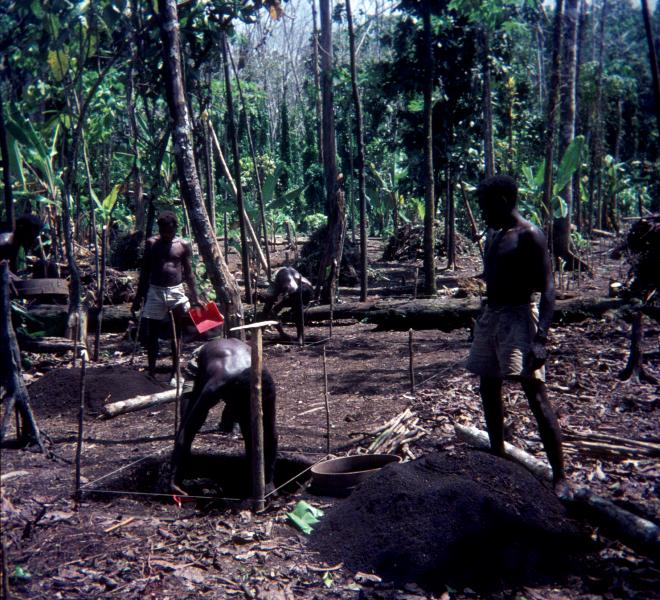 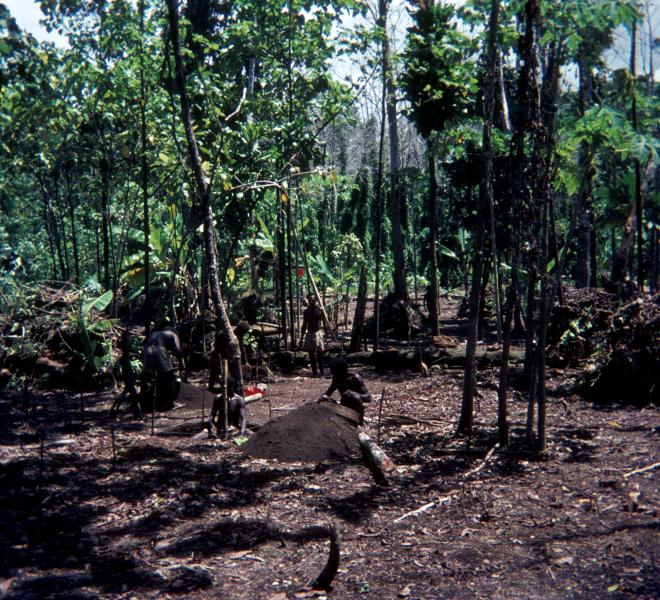 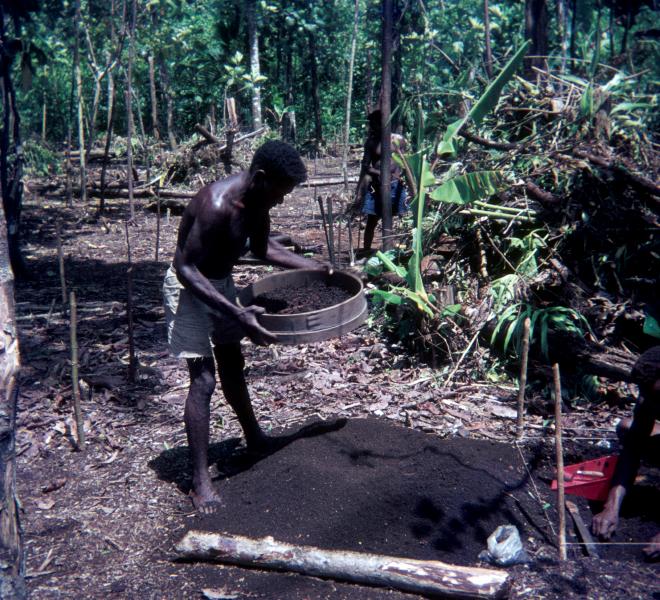 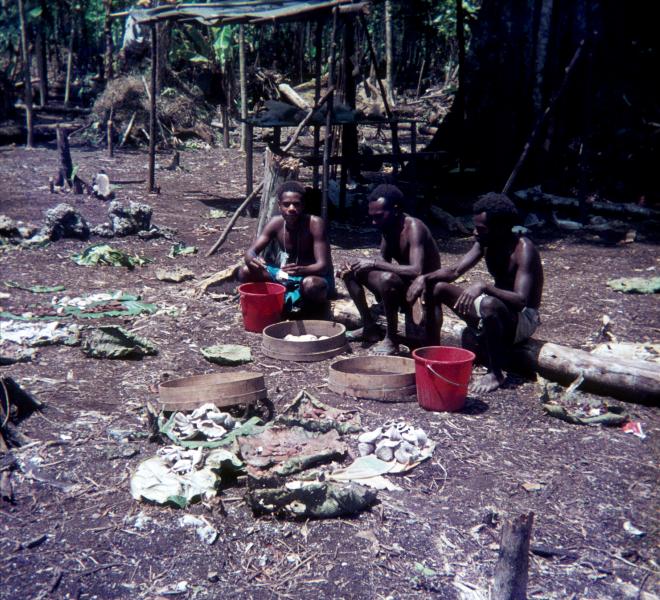 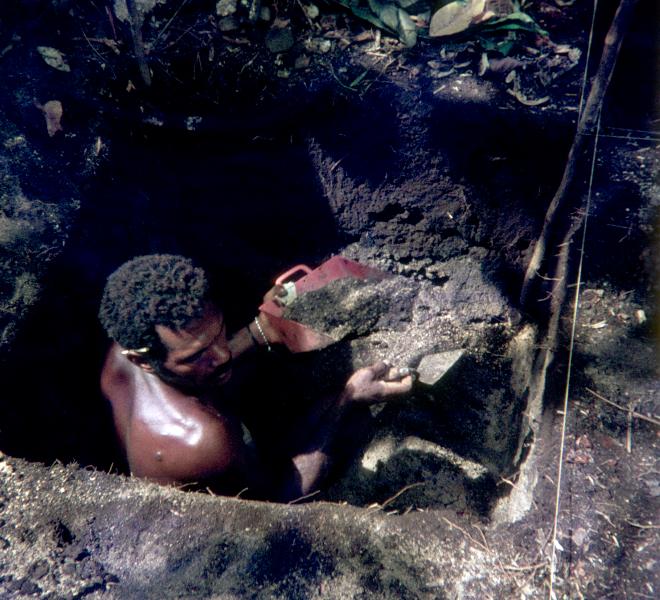 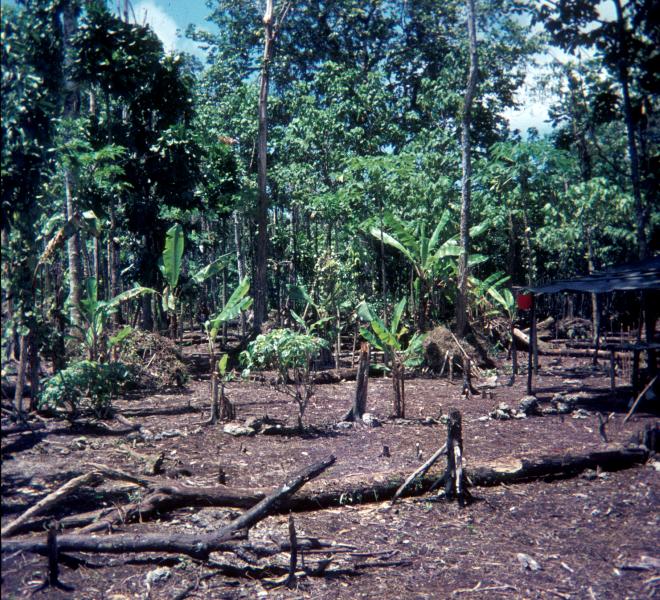 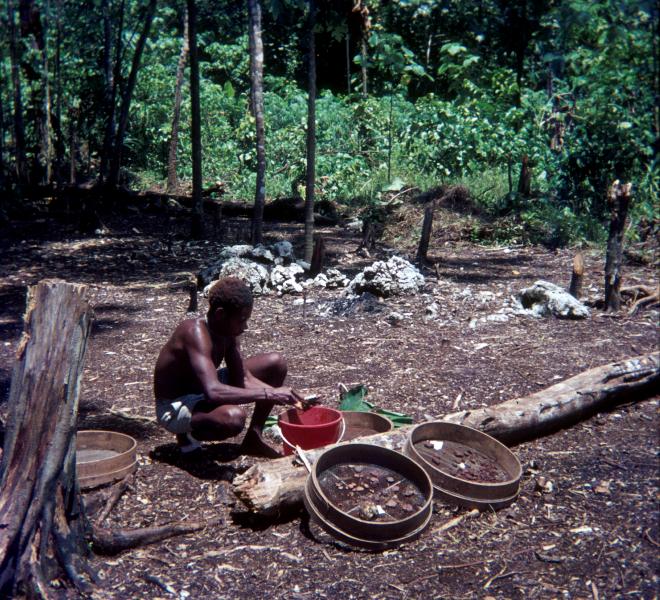 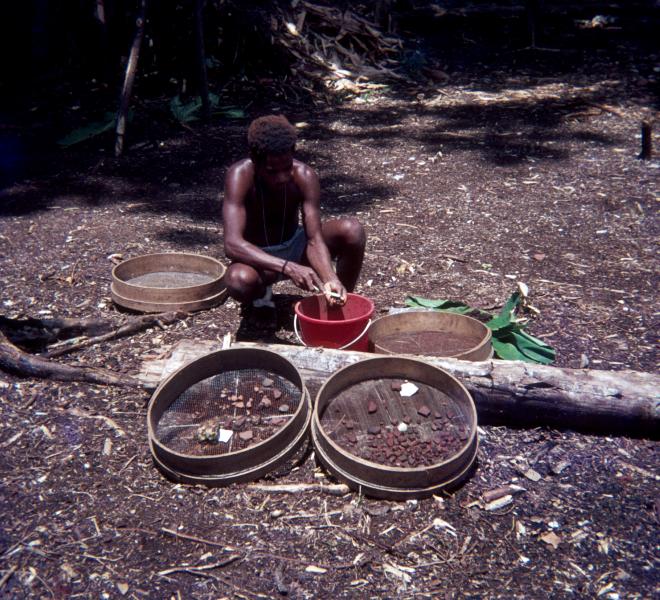 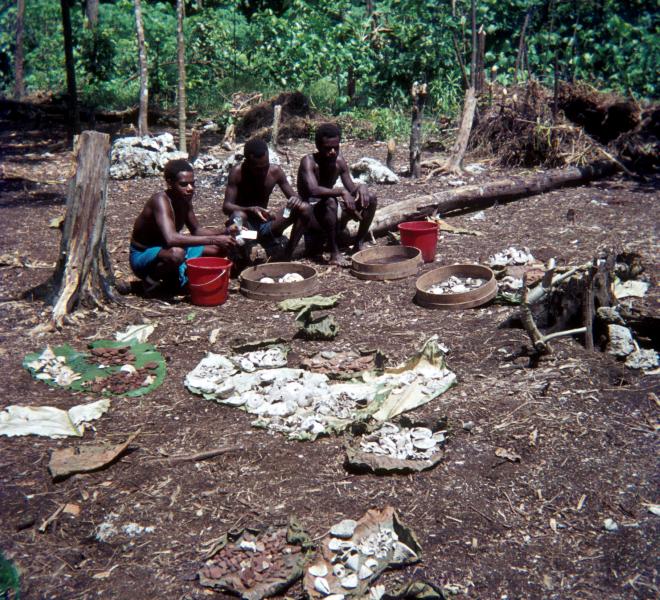 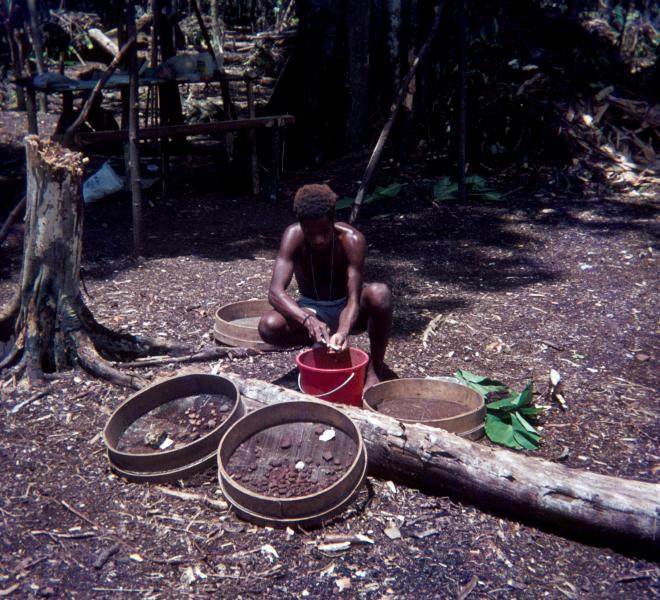 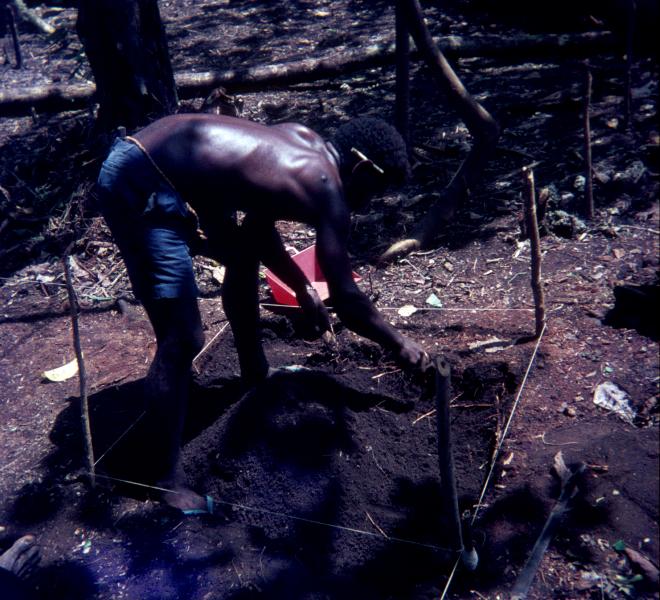 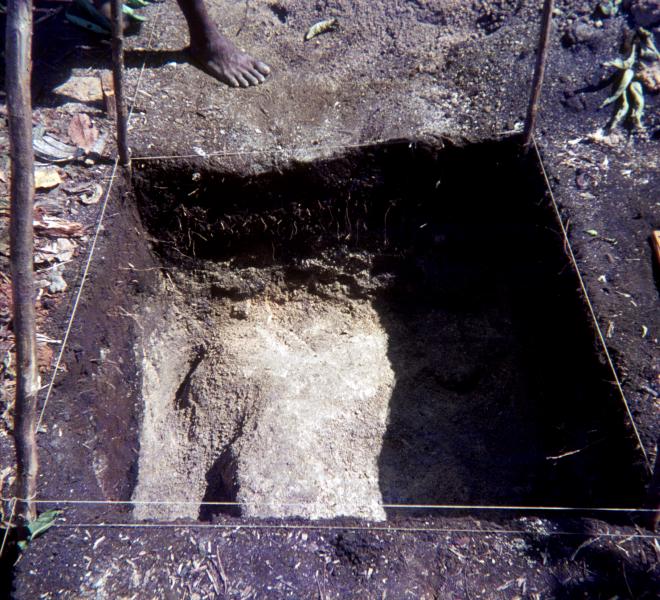 |
| Floor Plan | |
| Stratigraphy | |
Site Information |
|
| Distribution of Remain(s) | The method used by Green and his field team to define the SE-SZ-8 site boundaries, mapping the distribution of pottery on the landscape via surface survey, showed that material culture was distributed, in varying densities, over 14,000 m2 (Green et al. 2008: 58). The survey employed to define the site boundaries was also used to identify an appropriate area to excavate. The selected area contained substantial numbers of surface remains and was roughly “T” shaped, with the bulk of the area extending north-south and a small western extension aligned east-west. It covered an area of 459 m2 (Green et al. 2008: 56-58). The excavation strategy consisted of an intensive survey and program of surface artifact collection, followed by the excavation of 52 1 meter pits randomly selected from pre-defined 9 meter blocks within the target area (Green et al. 2008: 56). The excavations revealed that the highest concentrations of artifacts were located along the central north-south axis of the excavated area and become less abundant in the north-east and south-west margins of this area (Green 1976a: 252,254). Additionally, a series of small pit features of varying shapes and sizes were identified, primarily concentrated in the small western extension (Green et al. 2008:54). |
| Approximate Size | 14,000 m2 (Green et al. 2008:58) |
| Preservation Condition | |
| Culture Type(s) | Lapita |
| C14Date(s) | Conventional (uncalibrated) radiocarbon dates and sample provenance information: 3250±70 BP (SUA-111), Square DD-64, Level 4 (45-65 cm), sample collected from the base of the coralline grey / brown sand layer (layer 2) - Misc. clam & Tridacna (Green et al. 2008: 58-59). 3140±70 BP (SUA-112), Square VV-50, Level 4 (40-60 cm), sample collected near the base of the grey sand layer (Layer 2) – Two Tridacna sp. (Green et al. 2008: 58-59). 3192±51 BP (WK-12304), Square PP-54, Level 4 (45-60 cm), sample collected from the brown sand layer (Layer 2) – Trochus niloticus (Green et al. 2008: 58-59). 3149±57 BP (WK-12305), Square HH-61, Level 5 - 1st lens (60 cm), sample collected from the grey sand layer (Layer 2) – Turbo astrea (?) (Green et al. 2008: 58-59). 910±95 BP (I-5752), Square ZZ-58, Level 2 (15-20 cm), sample collected from an earth oven at the base of the brown layer (Layer 1) – charcoal (Green et al. 2008: 58-59). Summary of calibrated radiocarbon dates: Green et al. (2008: 50,59) argue that Nanggu was occupied for a period of 100 years and that the period of occupation began in 3400-3100 cal BP at one standard deviation (68.2% probability) and 3650-3000 cal BP at two standard deviations (95.4% probability) and ended in 3200-2900 cal BP at one standard deviation and 3300-2600 cal BP at two standard deviations. The marine ΔR value for the Reef/Santa Cruz region determined by Jones et al. (2007: 101) (–81 ± 64 14 C yr) was applied to four dates undertaken upon shell material (SUA-111, SUA-112, WK-12304 and WK-12305) (Green et al. 2008: 58). |
| Artifact Type(s) | Pottery, faunal remains, lithics (flakes, adzes, gravers, cores, points) (Green 1976a: 255-263; Sheppard 1992:149-152). |
| Ceramic Type(s) | |
Cultural information |
|
| Significance | Nanggu is one of three Lapita sites (including Nenumbo – SE-RF-2 and Ngamanie - SE-RF-6) in the Reefs/Santa Cruz Islands, which collectively represent the oldest settlements in Remote Oceania (Green et al. 2008: 49; Chiu 2012: 8. Detailed investigations into the chronology of the sites by Green (2009: 45-46), indicates that Nanggu is the oldest of the three, followed by Nenumbo and lastly Ngamanie (Green et al. 2009:45-46). The site of SE-RF-8 is, currently, the earliest settlement discovered in Remote Oceania and, therefore, can provide information on the first colonizing populations. Additionally, the site represents the beginning of an extended sequence of occupation in the Reef/ Santa Cruz Islands, which, if studied in combination with the sites of SE-RF-2 and SE-RF-6, provides a means of analyzing how these populations adapted to their new environment through time (Green 2009: 45-46). |
| Brief Research History | 1970 – Reconnaissance program in the southeast Solomon Islands conducted by R.C. Green as part of “The Southeast Solomon Islands Cultural History Programme” (lead by R.C. Green and D.E. Yen), leading to the identification of SE-SZ-8 along with many other sites in the region (Green 1976a:246; Green 1976b: 9). 19712 – Excavation conducted by R.C. Green, a total of 51 m2 was excavated (Green 1972: 197,199; Green 2009: 8; Green et al. 2008: 58). |
| Note | 1 - Formerly BS-SZ-8 2 - Two possible dates have been published for the year during which this field season occurred, 1971 (Green 1972:197,199; Green 2009:8; Green et al. 2008: 58) and 1972 (Sheppard 1992:146). |
| Reference(s) | Best, S. 2002. Lapita: A view from the East. New Zealand Archaeological Association Monograph 24. Auckland; New Zealand: New Zealand Archaeological Association. Chiu, S. 2007. Detailed Analysis of Lapita Face Motifs: Case Studies from Reef/Santa Cruz Lapita Sites and New Caledonia Lapita Site 13A. In S. Bedford, C. Sand and P. Connaughton (eds.), Oceanic Explorations: Lapita and Western PacificSettlement, pp. 241-264. Terra Australis 26. ANU E Press, Australian National University. Chiu, S. 2010. Lapita Pottery of the Reef/Santa Cruz Islands, Southeast Solomon Islands. In C. Sand and S. Bedford (eds.), Lapita: Ancêtres Océaniens, pp.118-119. Paris; France: Quai Branly Museum. Clough, R. 1992. Firing Temperatures and the Analysis of Oceanic Ceramics: A Study of Lapita Ceramics from Reef/Santa Cruz, Solomon Islands. In J.C. Galipaud (ed.), Poterie Lapita et Peuplement: Actes du Colloque Lapita, Nouméa, Nouvelle-Calédonie, Janvier 1992, pp. 177–192. Nouméa: ORSTOM. Dickinson, W.R. 1978. Sand Tempers in Southeast Solomons Sherds from Feru Rockshelter on Santa Ana and Lapita Sites in the Santa Cruz Group. University of Auckland Oceanic Prehistory Records No. 7, Auckland; New Zealand: The University of Auckland. Doherty, M.W. 2007. Post-Lapita Developments in the Reef-Santa Cruz Islands, Southeast Solomon Islands. Unpublished PhD Thesis. Auckland; New Zealand: The University of Auckland. Donovan, L.J. 1973. A Study of the Decorative System of the Lapita Potters in Reefs and Santa Cruz Islands. Unpublished MA Thesis. Auckland; New Zealand: University of Auckland. Falk, B.A. 2011. Geochemical Characterisation of Lapita Ceramics from the Reef-Santa Cruz Islands: An Analysis of the SE-SZ8, SE-RF2, and SE-RF6 Ceramic Assemblages. Unpublished MA Thesis. Auckland; New Zealand: The University of Auckland. Green, R.C. 1972. Southeast Solomons Fieldwork. Asian Perspectives 15(2): 197-199. Green, R.C. 1974. Sites with Lapita Pottery: Importing and Voyaging. Mankind 9(4): 253-259. Green, R.C. 1976a. Lapita Sites in the Santa Cruz Group. In R.C. Green and M.M. Cresswell (eds.), Southeast Solomon Islands Cultural History: A preliminary Survey, pp. 245-265. The Royal Society of New Zealand Bulletin 11. Welington; New Zealand: Bryce Francis LTD. Green, R.C. 1976b. An Introduction to the Southeast Solomons Culture History Programme. Working Papers in Anthropology, Archaeology and Maori Studies No. 51. Auckland; New Zealand: Department of Anthropology, University of Auckland. Green, R.C. 1978. New sites with Lapita pottery and their implications for an understanding of the settlement ofthe Western Pacific. Working Papers in Anthropology, Archaeology and Maori Studies No. 51. Auckland; New Zealand: Department of Anthropology, University of Auckland. Green, R.C. 1979. Lapita. In J. Jennings (ed.), The Prehistory of Polynesia,pp.27-60. Cambridge; U.K: Harvard University Press. Green, R.C. 1985. An Interpretation of Source Allocations for Obsidian from Three Lapita Sites in the Reef/Santa Cruz Island Group, Southeast Solomons. Unpublished Manuscript. Green, R.C. 1987. Obsidian Results from the Lapita Sites of the Reef/Santa Cruz Islands. In W.R. Ambrose and J.M.J. Mummery (eds.), Archaeometry: Further Australasian Studies, pp. 239-249. Canberra; Australia: Australian National University. Green, R.C. 1991a. The Lapita Cultual Complex: Current evidence and proposed models. Bulletin of the Indo-Pacific Prehistory Association 11: 295–305. Green, R.C. 1991b. A reappraisal of the dating for some Lapita sites in the Reef/Santa Cruz Group of the Southeast Solomons. Journal of the Polynesian Society 100(2): 197-207. Green, R.C. 1996. Prehistoric Transfers of Portable Items during the Lapita Horizon in Remote Oceania: A Review. In I.C. Glover and B. Bellwood (eds.), Indo-Pacific Prehistory: The Chiang Mai Papers, Vol. 2, pp. 119-130. Canberra; Australia: Australian National University. Green, R.C. 2009. An evaluation of sample adequacy for the Lapita-style ceramic assemblages from three sites located in the Reef/Santa Cruz Group, Outer Eastern Islands of the Solomons. Research in Anthropology & Linguistics-e No. 4, pp.1-64. Auckland; New Zealand: Department of Anthropology, The University of Auckland. Green, R.C. 2010. The Outer Eastern Islands of the Solomons: a Puzzle for the Holistic Approach to the Anthropology of History. In J. Bowden, N. P. Himmelmann and M. Ross (eds.), A Journey through Austronesian and Papuan Linguistic and Cultural Space: Papers in Honour of Andrew Pawley, pp. 207-223. Canberra; Australia: Pacific Linguistics. Green, R.C., Jones, M. and P. Sheppard. 2008. The reconstructed environment and absolute dating of SE-SZ-8 Lapita site on Nendö, Santa Cruz, Solomon Islands. Archaeology in Oceania 43: 49-61. Green, R.C. and D.E. Yen. 2009. The Southeast Solomon Islands culture history project: Principal investigators’ overview of the 1970s project including recent and current research. In P.J. Sheppard, T. Thomas and Glenn R. Summerhayes (eds.), Lapita: Ancestors and descendants, pp. 147-172. New Zealand Archaeological Association Monograph 28. Auckland; New Zealand: New Zealand Archaeological Association. Jones. M., Petchey, F., Green, R.C., Sheppard, P. and M. Phelan. 2007. The Marine ΔR for Nenumbo (Solomon Islands): A case study in calculating reservoir offsets from paired sample data. Radiocarbon 49(1): 95-102. Sheppard, P.J. 1992. A report on the flaked lithic assemblages from three Southeast Solomons Lapita Sites (SE-SZ-8, SE-RF-2, SE-RF-6). In J.C. Galipaud (ed.), Poterie Lapita et Peuplement: Actes du Colloque Lapita, Nouméa, Nouvelle-Calédonie, Janvier 1992, pp. 145–153. Nouméa: ORSTOM. Sheppard, P.J. 1993. Lapita Lithics: Trade/Exchange and Technology. A View from the Reefs/Santa Cruz. Archaeology in Oceania 28 (3): 121-137. Sheppard, P.J. and L.A. Pavlish. 1992. Weathering of Archaeological Cherts: A case study from the Solomon Islands. Geoarchaeology: An International Journal 7(1): 41-53. Sheppard, P. J. and R. Walter. 2006. A revised model of Solomon Islands culture history. Journal of the Polynesian Society 115(1): 47-76. Sheppard, P.J. and R.C. Green. 2007. Sample Size and the Reef/Santa Cruz Lapita Sequence. In S. Bedford, C. Sand and P. Connaughton (eds.), Oceanic Explorations: Lapita and Western Pacific Settlement, pp. 289–299. Terra Australis 26. ANU E Press, Australian National University. Sheppard, P., Trichereau, B. and C. Milicich. 2010. Pacific obsidian sourcing by portable XRF. Archaeology in Oceania 45: 21-30. Yen, D.E. 1982. The Southeast Solomon Islands Cultural History Programme. Bulletin of the Indo-Pacific Prehistory Association 3: 52-66. |

